Bachelor / Graphic Design and Illustration
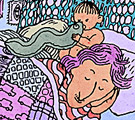
Daniel Jojje Wasmuth

Ebba Forslind

Gustaf From
Jeff Östberg
Jesus Verona
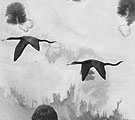
Lou Fallenius
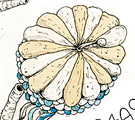
Marcus-Gunnar Pettersson
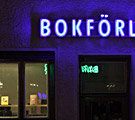
Maryam Fanni

Miia Vallius
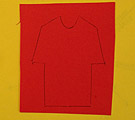
Minna Sakaria
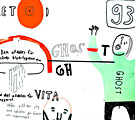
Tomas Nilsson
Creatical Thinking
“Anyone can look for fashion in a boutique or history in a museum. The creative explorer looks for history in a hardware store and fashion in an airport.” /Robert Wieder, Stand-up Comedian
Among the stated objectives of the Swedish compulsory school and higher education (including Konstfack) is to foster the ability to think critically. Being able to interpret, analyze and assess information, questions and problems are important skills that we are constantly honing in the graphic design and illustration program. What is not brought up as much in Swedish education, regardless of its level or specialization, not even at Konstfack, is creative thinking. Perhaps these are seen as incompatible opposites; the creative thinker is associated with wild, crazy and impractical ideas and the critical thinker with seriousness and reflection.
These two ways of thinking are, of course, equally important. For example, creative thinking helps us generate a great variety of unexpected and original possibilities, while critical thinking comprises the assessment and analysis of the alternatives which have the most potential.
“Anyone can look for fashion in a boutique or history in a museum. The creative explorer looks for history in a hardware store and fashion in an airport.” /Robert Wieder, Stand-up Comedian
Among the stated objectives of the Swedish compulsory school and higher education (including Konstfack) is to foster the ability to think critically. Being able to interpret, analyze and assess information, questions and problems are important skills that we are constantly honing in the graphic design and illustration program. What is not brought up as much in Swedish education, regardless of its level or specialization, not even at Konstfack, is creative thinking. Perhaps these are seen as incompatible opposites; the creative thinker is associated with wild, crazy and impractical ideas and the critical thinker with seriousness and reflection.
These two ways of thinking are, of course, equally important. For example, creative thinking helps us generate a great variety of unexpected and original possibilities, while critical thinking comprises the assessment and analysis of the alternatives which have the most potential.
Generating lots of options is not enough, in and of itself, to help you solve a problem, but if you only value and assess, there will be a lack of possibilities to choose between. In other words, good problem solvers need to think both creatively and critically, generating alternatives and focusing their thinking.
No one can supply all of the required knowledge and answer all of the questions that our students will face in the future. We can barely even formulate the questions. But we can formulate a vision, one in which our students are trained to be creative, critical problem-solvers who have learned to think for themselves and are thus able to face complex challenges in a changing world. It is gratifying that this vision can already be seen in many of the works at this year’s graphic design and illustration degree show.
Welcome!
Martin Frostner, Senior Lecturer in Graphic Design
Kreatiskt tänkande
“Anyone can look for fashion in a boutique or history in a museum. The creative explorer looks for history in a hardware store and fashion in an airport.” /Robert Wieder, stand-up-komiker
Bland de mål som står inskrivna högst upp i den svenska grundskolan och i det högre utbildningsväsendets (inklusive Konstfacks) läroplaner är förmågan att tänka kritiskt. Att kunna tolka, analysera och utvärdera information, frågeställningar och problem är viktiga egenskaper som vi ständigt tränar på i utbildningen för grafisk design och illustration. Det som inte nämns så ofta i svensk utbildning oavsett nivå och inriktning, inte ens på en plats som Konstfack, är kreativt tänkande. Kanske ses dessa villkor som oförenliga motsatser där den kreativa tänkaren associeras med vilda, tokiga och opraktiska idéer och den kritiske med seriositet, allvar och reflektionsförmåga.
Naturligtvis är dessa två sätt att tänka lika viktiga. Kreativt tänkande hjälper oss att exempelvis generera många oväntade, originella och varierande möjligheter medan kritiskt tänkande innefattar granskning och analys av de mest utvecklingsbara alternativen.
“Anyone can look for fashion in a boutique or history in a museum. The creative explorer looks for history in a hardware store and fashion in an airport.” /Robert Wieder, stand-up-komiker
Bland de mål som står inskrivna högst upp i den svenska grundskolan och i det högre utbildningsväsendets (inklusive Konstfacks) läroplaner är förmågan att tänka kritiskt. Att kunna tolka, analysera och utvärdera information, frågeställningar och problem är viktiga egenskaper som vi ständigt tränar på i utbildningen för grafisk design och illustration. Det som inte nämns så ofta i svensk utbildning oavsett nivå och inriktning, inte ens på en plats som Konstfack, är kreativt tänkande. Kanske ses dessa villkor som oförenliga motsatser där den kreativa tänkaren associeras med vilda, tokiga och opraktiska idéer och den kritiske med seriositet, allvar och reflektionsförmåga.
Naturligtvis är dessa två sätt att tänka lika viktiga. Kreativt tänkande hjälper oss att exempelvis generera många oväntade, originella och varierande möjligheter medan kritiskt tänkande innefattar granskning och analys av de mest utvecklingsbara alternativen.
Att generera många olika valmöjligheter är inte tillräckligt i sig för att hjälpa dig att lösa ett problem men om du enbart värderar och bedömer skapas för få möjligheter att välja mellan. Goda problemlösare måste alltså tänka både kreativt och kritiskt, generera alternativ och fokusera i sitt tänkande.
Ingen kan helt tillgodose de kunskaper eller ge svar på alla de frågor som våra studenter ställs inför i framtiden. Vi kan knappast ens formulera frågorna. Men vi kan formulera en vision där våra studenter utbildas till att bli kreativa, kritiska problemlösare, och som lärt sig att tänka själva och därför kan möta komplexa utmaningar i en föränderlig värld. Det är glädjande att den visionen faktiskt redan finns att skåda i många av arbetena på årets avgångsutställning i grafisk design och illustration.
Välkomna!
Martin Frostner, lektor i grafisk design
